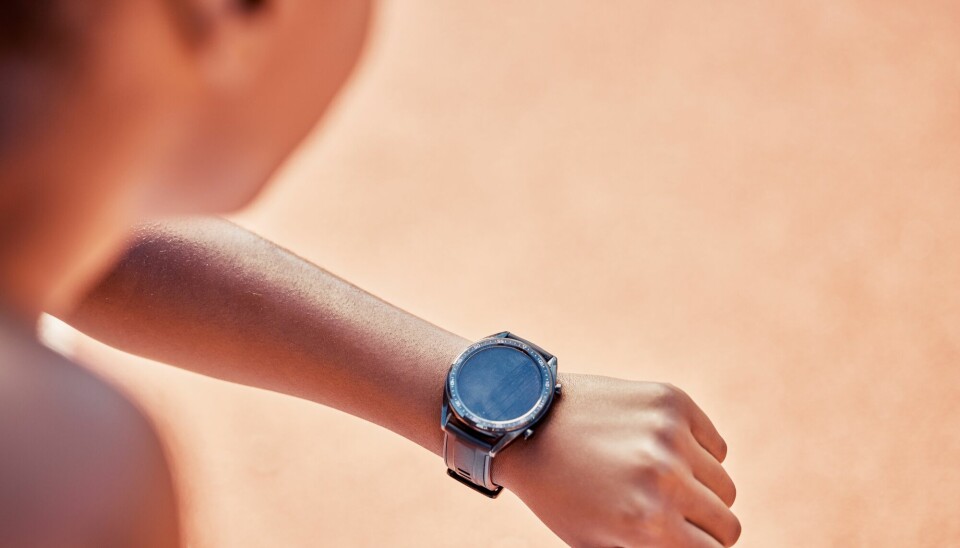Share your science:

Three reasons why your sports watch cannot measure stress
SHARE YOUR SCIENCE: The most crucial element in managing stress is, and will always be, you - how you interact with the world and manage the universal challenges we all face.
Modern sports watches claim to track various health metrics, such as stress balance, sleep, body battery, recovery needs, and workout readiness. Does this mean the watch can tell you how well you've slept, how stressed you are, or what your energy level is? Research gives a clear and simple answer: No.
Sports watches aim to estimate stress through heart rate and heart rate variability (HRV).
This has three fundamental limitations:
- The sensor on the watch can only measure HRV with sufficient accuracy when you`re at complete rest.
- Measuring HRV when not fully at rest is not meaningful, as nearly everything we do can influence the measurement.
- Even if the first two issues were resolved, a significant underlying problem remains: HRV offers only a glimpse into physical strain. However, this does not mean that stress, as we experience it in everyday life, can be accurately measured solely through heart rate and HRV.
Different measuring techniques
Measuring HRV is challenging because it involves detecting minor variations in the time intervals from one heartbeat to the next. By utilising a chest strap that records the heart's electrical activity through electrocardiography (ECG), and ensuring a high frequency of readings, it becomes possible to accurately capture these subtle differences. The reason for this is that each heartbeat generates a distinct voltage spike, which ECG can easily detect.
Sport watches, in contrast, usually employ optical sensors (photoplethysmography; PPG) to detect changes in blood flow rather than changes in electrical voltage. This method is significantly less precise; unlike the clear voltage spikes detected by ECG, there's no equivalent signal in blood flow. Additionally, this technique is highly sensitive to a variety of factors such as movement, temperature, skin colour, and how well the device fits against the skin.
Research suggests that HRV measured with optical sensors may be effective when at rest, but not during movement. It is important to note that measuring HRV requires a much higher signal quality compared to measuring heart rate, as the calculation of HRV rely on precisely capturing the duration of each individual heartbeat. In contrast, heart rate is calculated as an average over several heartbeats.
Healthy stress serves as a vital response, acting as a daily wake-up call, a source of energy, a booster for the immune system, an enhancer of concentration, and a motivator.
Thus, while optical sensors might appear to function adequately for measuring heart rate, they can exhibit significant inaccuracies in measuring HRV. Notably, tests on the accuracy of optical sensors also frequently reveal errors in heart rate measurements themselves. As a result, we do not recommend relying on a watch's heart rate monitor during workouts.
Must be measured at rest
The second issue pertains to HRV itself. HRV is not ideally suited for measurement during any activity other than resting. One reason for this is the need to assess variability while the heart rate remains stable.
Additionally, we don`t want simple actions such as swallowing saliva, drinking a glass of water, or talking to a friend to impact the measurement. Yet, they inevitably will, without you necessarily being more or less 'stressed' or strained for that reason.
It is therefore essential to have good control over your thoughts, your emotions, your breathing, your digestion, and your body`s hydration level when measuring HRV. Additionally, your heart rate should be stable, as variations in heart rate over an extended period will also impact the measurement. So, you cannot, for example, stand up, watch TV, go for a walk, or exercise, and still expect to get useful HRV measurements. Thus, you must measure HRV in a state of complete rest.
This leaves you with two options. Measuring either throughout the night or in the morning immediately after waking up and visiting the bathroom. By using a proper chest strap instead of your watch's optical sensor, you can create the optimal conditions for obtaining meaningful measurements.
The next step is to conduct these measurements consistently over time. As weeks pass and you accumulate more data, you`ll start to understand what your normal HRV level is. This process enables you to make comparisons with your own baseline. However, interpreting HRV and understanding what the numbers indicate about your physical strain or 'stress', remains a complex task.
HRV is not equal to stress
Our third point, and perhaps the biggest challenge, is that HRV doesn`t directly measure stress. Instead, it highlights behaviour, or an excited or activated state. HRV does not reveal your actual stress response or how you manage stress.
Even though stress and HRV may vary simultaneously, stress cannot be fully accounted for by HRV alone. For instance, the relation between HRV and perceived stress when measured in a work environment is limited. Stress regulation does not function like a simple seesaw mechanism with gas and brake controls in the nervous system. The process is far more intricate.
When the stress response is activated, over 10 per cent of your genes alter their activity. The complexity of such an activation can be compared to a stone thrown into still water – the ripples extend far and wide. The duration of these effects in the body largely depends on your personal interpretation.
Stress is good for you
Healthy stress serves as a vital response, acting as a daily wake-up call, a source of energy, a booster for the immune system, an enhancer of concentration, and a motivator. Moderate stress promotes action and survival, and without it, we would not have survived. So-called dangerous stress often impacts us as well, but understanding and distinguishing between the different types is incredibly complex.
A simplified understanding of stress where activation equals problematic stress might overlook positive aspects of stress – namely, the type of activation necessary for mastery and growth. Thus, it's your psychology and interpretation that play a crucial role, not your heartbeats or HRV.
Use the sports watch to monitor your workout sessions; it`s effective for that purpose. However, keep in mind that it`s not suitable for understanding your internal stress levels. The most crucial element in managing stress is, and will always be, you - how you interact with the world and manage the universal challenges we all face.
- To read norwegian version of this article, follow link: Her er tre problemer med å måle stress med pulsklokke
FURTHER READING:
Share your science or have an opinion in the Researchers' zone
The ScienceNorway Researchers' zone consists of opinions, blogs and popular science pieces written by researchers and scientists from or based in Norway.
Want to contribute? Send us an email!































